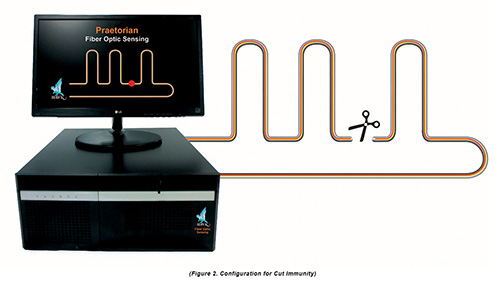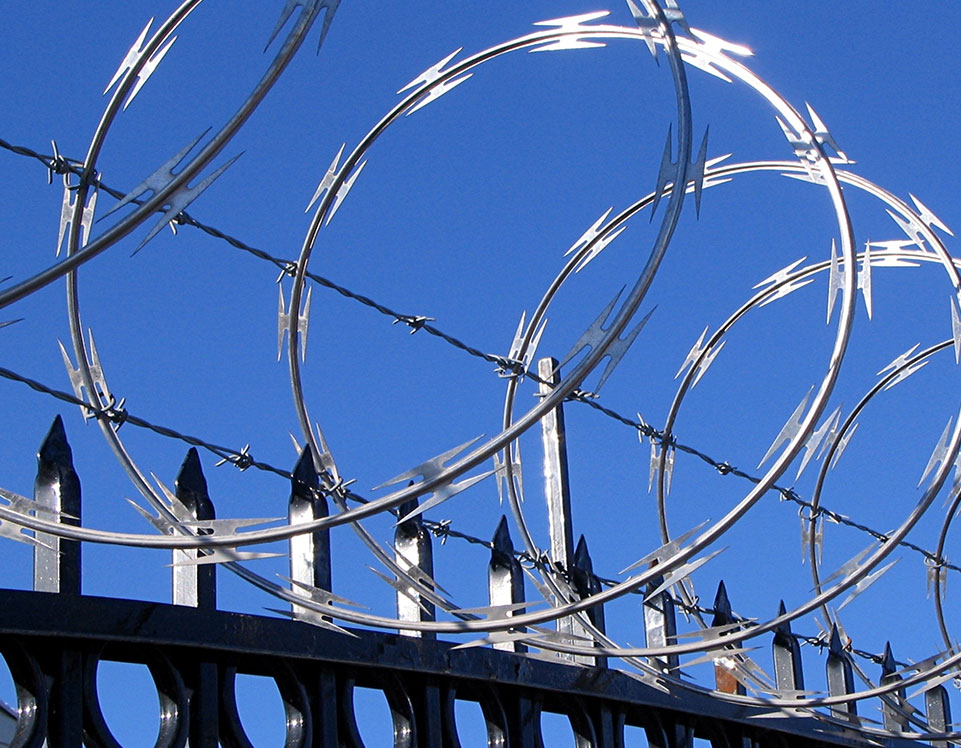Benefits of a Fiber Optic Security System for Next-Generation Security Solutions
Benefits of a Fiber Optic Security System for Next-Generation Security Solutions
Blog Article
Improve Your Safety And Security With Advanced Fiber Optic Safety And Security Equipments
In a period where safety is critical, advanced fiber optic safety and security systems provide an engaging service for enhancing safety and security throughout different environments. These systems not just boast premium transmission capacity and speed for high-resolution surveillance yet additionally supply impressive durability against exterior disturbances. As organizations increasingly look for trustworthy means to shield their assets, the assimilation of innovative technologies like AI and IoT within fiber optic frameworks elevates necessary questions concerning their effectiveness compared to traditional systems. What ramifications do these developments hold for future security procedures?
Advantages of Fiber Optic Safety And Security
Using the advantages of fiber optic innovation substantially improves safety systems across different applications. Among the primary advantages is the raised data transfer capacity, allowing for the transmission of huge amounts of information at broadband. This is especially vital for real-time video clip security, where high-resolution feeds can be sent out without latency, guaranteeing instant response abilities.
Furthermore, fiber optics exhibit exceptional resistance to electro-magnetic disturbance, which is essential in settings with prospective signal disturbances. This dependability guarantees constant efficiency in important safety and security operations. Fiber optic wires are much less vulnerable to tapping and unapproved accessibility contrasted to traditional copper electrical wiring, therefore improving data stability and discretion.
Another significant benefit is the resilience of fiber optic systems; they are much more immune to environmental elements such as dampness, temperature changes, and corrosive materials. This resilience equates to decrease maintenance costs and longer lifespans for security installments.
Finally, the light-weight nature of fiber optic wires assists in simpler installment and transmitting, specifically in complicated infrastructures (fiber optic security system). Inevitably, the integration of fiber optic innovation into protection systems not only reinforces protection measures but likewise enhances functional efficiency
Secret Functions to Think About
When evaluating fiber optic safety and security systems, several crucial functions need to be taken into consideration to make certain ideal performance and efficiency. Initially, assess the system's discovery variety and level of sensitivity; a considerable array enables keeping an eye on huge locations, while high level of sensitivity ensures that even small disruptions are identified promptly.
Following, think about the assimilation capabilities of the system. A fiber optic safety system should seamlessly interface with existing safety actions such as cameras and alarms, developing a cohesive security network.
Longevity and ecological resistance are also vital features. Guarantee that the system is made to stand up to rough climate condition and possible physical dangers, as this will certainly extend its operational life expectancy.

Lastly, check into the scalability of the system. A robust fiber optic safety and security system need to be quickly expandable to suit future demands without significant overhauls. By meticulously considering these functions, you can pick a fiber optic safety remedy that enhances security and safety and security in your atmosphere.
Installation Refine Introduction
To successfully execute a fiber optic protection system, a systematic installment procedure is important. This procedure begins with a thorough site evaluation to identify the details protection needs and to recognize optimal places for official site fiber optic cable televisions and security gadgets. Following this evaluation, the setup team will develop a detailed plan, consisting of cable paths, necessary devices, and conformity with neighborhood policies.
Following, the setup involves laying the fiber optic wires, guaranteeing they are protected from environmental aspects and physical damages. Proper handling methods are important, as fiber optic cords are delicate and can be quickly harmed. After the cabling is mounted, adapters and discontinuations are diligently finished to guarantee signal integrity.
The succeeding phase consists of setting up safety devices such as electronic cameras, movement detectors, and security system, all incorporated with the fiber optic network. Strenuous screening is conducted to confirm that all elements are functioning correctly and to ensure optimum efficiency.

Comparing Fiber Optic to Conventional Equipments
The development of safety and security technology has caused substantial improvements in the comparison between fiber optic systems and typical copper-based systems. Fiber optic systems use light to transfer data, using premium transmission capacity and rate compared to their copper counterparts. This leads to enhanced data transmission capacities, making optical fiber optimal for high-resolution video monitoring and real-time surveillance.
In addition, fiber optic cables are resistant to electro-magnetic interference, decreasing the chance of signal destruction brought see this page on by outside variables. This particular guarantees constant performance, also in challenging atmospheres. On the other hand, traditional copper systems are more vulnerable to disturbance, bring about potential vulnerabilities in safety applications.
Resilience is an additional benefit of fiber optic systems. They are much less susceptible to harm from ecological elements such as wetness and temperature level variations, which can compromise copper wiring. Fiber optics are lighter and thinner, permitting for less complicated installation and lowered physical footprint.
Nevertheless, conventional systems often tend to have lower first costs, making them appealing for budget-conscious jobs. While fiber optic systems might need a greater in advance investment, their long-lasting advantages-- such as reduced maintenance expenses and greater integrity-- often exceed the preliminary cost, placing them as a remarkable selection for contemporary protection needs.
Future Fads in Protection Technology
Arising patterns in safety and security innovation are poised to change the landscape of security and danger discovery - fiber optic security system. As organizations progressively face advanced hazards, technologies such as expert system (AI) and artificial intelligence (ML) are ending up being integral to safety and security systems. These technologies boost the capability of fiber optic systems by enabling real-time data evaluation, identifying abnormalities, and automating responses to prospective violations
Furthermore, the assimilation of the Internet of Things (IoT) is transforming protection frameworks. IoT devices can give thorough situational understanding and help with smooth interaction between various go to this website protection parts. This interconnectedness enables for more reliable monitoring and faster incident feedback times.
Biometric verification is likewise obtaining momentum, giving a greater degree of safety and security with distinct physical attributes. As this modern technology advances, it is most likely to be integrated into fiber optic systems for enhanced access control.
Final Thought
In conclusion, progressed fiber optic security systems represent a significant innovation in security and monitoring modern technology. The transition from conventional systems to fiber optic options reflects an expanding fad in the direction of much more reliable and effective safety and security measures in an increasingly complicated technical landscape.
Report this page